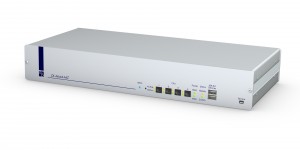It’s common knowledge that IT devices like computers play a huge role in our everyday life. But a thing almost no one knows is that IT devices emit radiations containing data. And that’s also the reason why you cannot apply any devices in critical areas such as the military. When it comes to transmitting sensitive data, the TEMPEST test ensures that devices are ready to be applied in such areas. But what exactly is this test? And how do you get your devices certified? That’s what we will show you in five easy steps.
1. What does TEMPEST mean?
TEMPEST is short for “Temporary Emanation and Spurious Transmission”. The TEMPEST test therefore refers to compromising emanations from electronic devices.
2. What are compromising emanations?
Any IT devices such as computers, keyboards, mouses, or even printers emit radiation. This radiation reaches further than you might think. But why is it called compromising emanation? Well, because compromising emanations can be intercepted and analysed and thus may disclose the information transmitted or otherwise processed. Once sensitive data gets in the wrong hands, the consequences could be fatal.
3. What’s so important about the TEMPEST certificate?
 Whether using them privately or to do your job – there are almost no areas that don’t use IT devices. Almost all processes run on computers: bureaucracy, data storage, organisational , the Internet – you name it. That’s why certain industries need to ensure that data from their devices cannot be intercepted.
Whether using them privately or to do your job – there are almost no areas that don’t use IT devices. Almost all processes run on computers: bureaucracy, data storage, organisational , the Internet – you name it. That’s why certain industries need to ensure that data from their devices cannot be intercepted.
And that’s exactly where the TEMPEST test comes into play: The test measures the degree of a device’s compromising emanation, since the emanations are different for each IT device. Long story short – the TEMPEST test defines if and in what safety zone devices can be used.
4. What are safety zones?
The TEMPEST test differentiates between four zones. Zone 0 represents the highest safety level whereas Zone 3 represents the lowest. Therefore IT devices that are to be applied in Zone 0 must fulfil much higher standards than Zone 3 devices. G&D’s KVM switch DL-MUX4-MC2, for example, can be used in Zone 1.
5. Why is it useful to get a TEMPEST certificate for devices?
TEMPEST-certified devices can be used in sensitive areas such as the military. The certificate makes sure that sensitive data cannot be intercepted despite compromising emanations.
Five steps to reach the goal
Of course, there are more details to be considered prior to and during certifying a device. But these five steps provide you with the basics you need to know about the TEMPEST certificate.
By: Cennet Gülmen
- Trade shows 2023: Experience G&D KVM products live and up close - 11. January 2023
- Innovative KVM solutions for control rooms - 14. December 2022
- Ada Lovelace – a true visionary and the world’s first female programmer - 12. December 2022

